Tips For First Aid in the Workplace :
Providing immediate and effective first aid to workers or others who have been injured or become ill at work may reduce the severity of the injury or illness and promote recovery. In some instances, this could mean the difference between life and death. Persons conducting a business or undertaking (PCBU) are responsible for providing, as far as is reasonably practicable, a safe working environment and adequate facilities for the welfare of their workers.
What do I need to consider?
The risk can be considered low or high depending on the workplace. A low-risk workplace is one where workers are not exposed to hazards that could result in serious injury or illness. Examples of low-risk workplaces include offices, shops or libraries. Potential work-related injuries and illnesses requiring first aid would be minor in nature.
A high-risk workplace refers to a workplace where workers are exposed to hazards that could result in serious injury or illness and would require first aid, for example, factories or motor vehicle workshops.
First aid risk assessment
First aid requirements vary from one workplace to another, so you must consider all relevant factors at your workplace when deciding what first aid arrangements you need to have in place, including:
the type of work being carried out
the hazards at the workplace
the size and location of the workplace (for example, the distance between work areas and response times for emergency services) and
the number and composition of people at the workplace (for example, workers, contractors, subcontractors, volunteers and visitors).
A thorough first aid risk assessment that considers all of these factors will help you to decide what first aid arrangements to provide. Through this process it should become clear what first aid facilities, equipment and training are needed. Review your first aid risk assessment regularly in consultation with your workers to ensure your arrangements stay adequate and effective.
Equipment and personnel
You must give your workers access to:
first aid equipment and facilities
trained first aiders.
Keep first aid kits close to areas where there is a higher risk of injury or illness, as well as inside work vehicles if workers are expected to travel as part of their job.
The contents of first aid kits should be based on your first aid risk assessment. At a minimum, they should include equipment for providing basic first aid, but extra equipment may be needed depending on the nature of the work and workplace (for example, in remote areas or where there is a risk of certain serious injuries like burns).
A first aid risk assessment will also help you to decide if a first aid room is needed at your workplace. You should set up a first aid room if it would be difficult to provide first aid at your workplace without one. We recommend in low-risk workplaces a first aid room is provided when there are 200 or more workers, and in high-risk workplaces when there are 100 or more workers.
A trained first aider should hold a nationally recognised statement of attainment from a registered training organisation. Some workplaces may require more specific or advanced first aid training depending on the nature of the work or the workplace. First aiders should attend training regularly so their knowledge and skills are up-to-date.



We used Gold Coast Roofing Restorations. They were honest and on budget with the roof restoration.
Thank-you John.
Thank-you Lee.
Best Regards.
Gold Coast Roofing Restorations.
Hi John.
Thanks for the roof restoration service. We will be recommending your gold coast service.
Ta,
Keith Bale.
Hello Keith,
Thanks for the recommendation. You are welcome for the roof restoration service.
Best Regards,
John.
Gold Coast Roofing Restorations